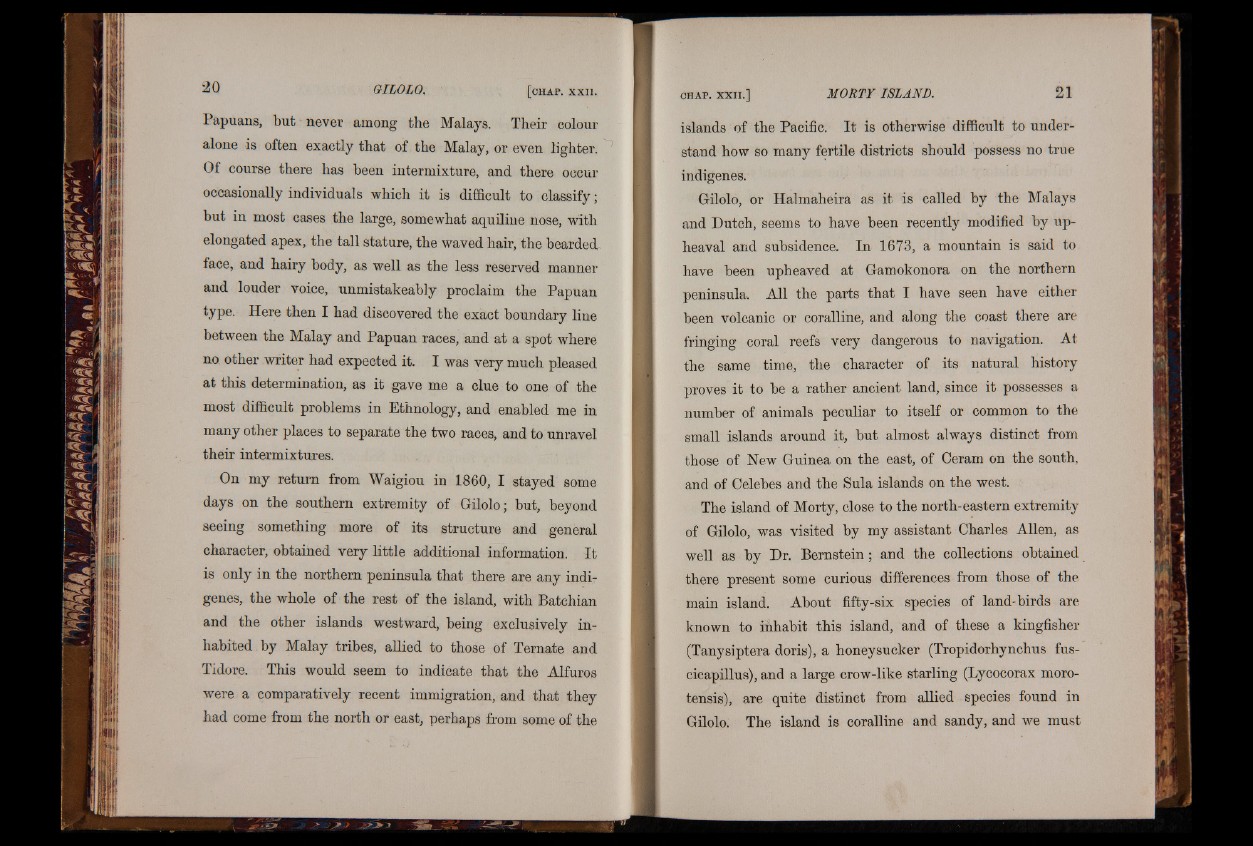
2 0 GILOLO. [chap . XXII.
Papuans, but never among the Malays. Their colour
alone is often exactly that of the Malay, or even lighter.
Of course there has been intermixture, and there occur
occasionally individuals which it is difficult to classify;
but in most cases the large, somewhat aquiline nose, with
elongated apex, the tall stature, the waved hair, the bearded
face, and hairy body, as well as the less reserved manner
and louder voice, unmistakeably proclaim the Papuan
type. Here then I had discovered the exact boundary line
between the Malay and Papuan races, and at a spot where
no. other writer had expected it. I was very much pleased
at this determination, as it gave me a clue to one of the
most difficult problems in Ethnology, and enabled me in
many other places to separate the two races, and to unravel
their intermixtures.
On my return from Waigiou in 1860, I stayed some
days on the southern extremity of Gilolo; but, beyond
seeing something more of its structure and general
character, obtained very little additional information. It
is only in the northern peninsula that there are any indigenes,
the whole of the rest of the island, with Batchian
and the other islands westward, being exclusively inhabited
by Malay tribes, allied to those of Ternate and
Tidore. This would seem to indicate that the Alfuros
were a comparatively recent immigration, and that they
had come from the north or east, perhaps from some of the
chap. xxii.] MORTY ISLAND. 21
islands of the Pacific. It is otherwise difficult to understand
how so many fertile districts should possess no true
indigenes.
Gilolo, or Halmaheira as it is called by the Malays
and Dutch, seems to have been recently modified by upheaval
and subsidence. In 1673, a mountain is said to
have been upheaved at Gamokonora on the northern
peninsula. All the parts that I have seen have either
been volcanic or coralline, and along the coast there are
fringing coral reefs very dangerous to navigation. At
the same time, the character of its natural history
proves it to be a rather ancient land, since it possesses a
number of animals peculiar to itself or common to the
small islands around it, but almost always distinct from
those of New Guinea on the east, of Ceram on the south,
and of Celebes and the Sula islands on the west.
The island of Morty, close to the north-eastern extremity
of Gilolo, was visited by my assistant Charles Allen, as
well as by Dr. Bernstein; and the collections obtained
there present some curious differences from those of the
m a in island. About fifty-six species of land-birds are
known to inhabit this island, and of these a kingfisher
(Tanysiptera doris), a honeysucker (Tropidorhynchus fus-
cicapillus), and a large crow-like starling (Lycocorax moro-
tensis), are quite distinct from allied species found in
Gilolo. The island is coralline and sandy, and we must